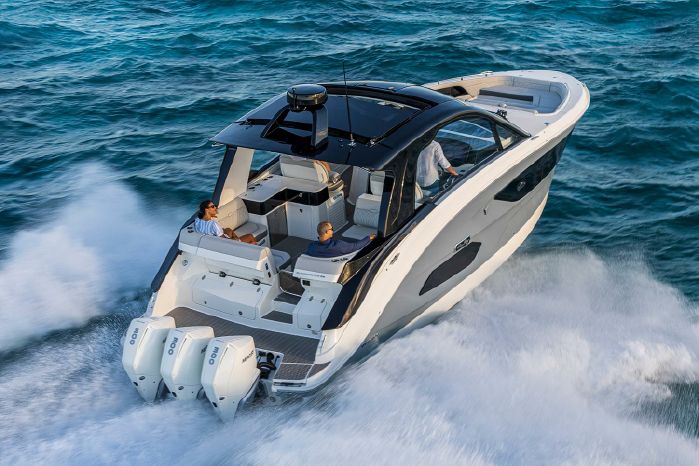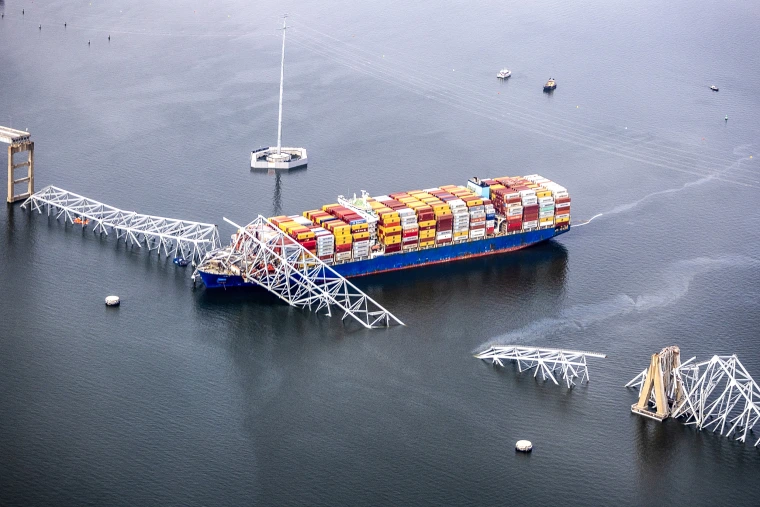Which State Has the Most Boating Accidents? Discover the Unexpected
Boating is a beloved pastime for many, but it also comes with its risks. When examining where these risks are most prevalent, one state stands out. Florida reports the most boating accidents in the nation, with a significant concentration in the Florida Keys.

This trend is notable due to Florida's expansive waterways, both inland and coastal, which offer many opportunities for recreational boating.
According to the U.S. Coast Guard, Florida not only leads in the number of accidents annually but also has seen substantial increases during periods of heightened boating activity.
Particularly alarming is the fact that Florida's accident rate is nearly double that of California, the state with the second most boating incidents. Factors like alcohol use, inexperience, and crowded waters contribute to these high numbers.
Understanding these statistics underlines the importance of boating safety.

Simple precautions such as following safety guidelines, avoiding alcohol, and maintaining proper equipment can significantly reduce the risk of accidents.
The goal is to enjoy Florida’s beautiful waters safely by being aware and prepared.
Key Takeaways
- Florida has the most boating accidents in the U.S.
- The Florida Keys have a high concentration of these incidents.
- Awareness and safety measures can reduce boating accidents significantly.
Understanding Boating Accidents in the U.S.
Boating accidents in the United States can result from various factors, including human error, environmental conditions, and substance use. Knowing the major causes and impacts is crucial for improving safety on the water.
The Scope of Boating Accidents
Every year, the U.S. Coast Guard compiles detailed accident statistics. These records capture the number and nature of recreational boating incidents.
In 2021, there were 4,439 boating accidents, revealing the prevalence of such incidents.
Florida reported the highest number of accidents with 723 incidents in that year. Overall, the data show that boating accidents remain a significant concern across the nation's waters.

Major Causes of Boating Accidents
Several key factors contribute to boating accidents. Operator inattention and inexperience are the primary causes, leading to collisions and capsizing.
Additionally, environmental conditions such as bad weather or hazardous waters play a significant role.
Mechanical failures and speeding are also considerable contributors.
Many boat operators might not have formal training, which increases the likelihood of mistakes and potentially fatal accidents.

The Impact of Alcohol and Drugs
One of the most critical factors affecting boating safety is the use of alcohol and drugs.
Alcohol was a contributing factor in over 7% of boating accidents in 2021. The impairment caused by alcohol significantly increases the risk of collisions, drownings, and other fatal incidents.
Substance use impacts judgment, reaction time, and coordination, making boating under the influence particularly dangerous.
Efforts to reduce alcohol-related accidents are crucial for decreasing overall boating fatalities.
Boating Safety Measures
Boating accidents can often be prevented through proper safety measures. Key aspects include wearing life jackets, receiving education and training, and adhering to boating regulations.
Importance of Life Jackets
Life jackets are a crucial safety measure for boaters. The U.S. Coast Guard requires vessels to have life jackets for each passenger.
Wearing one significantly increases survival chances in an accident. Studies have shown that a high life jacket wear rate correlates with lower drowning incidents.
The National Safe Boating Council emphasizes the importance of always wearing a life jacket, not just having it on board.
They come in various styles and sizes, ensuring comfort and safety for all ages. Proper maintenance, such as checking for buoyancy and avoiding sun damage, is essential.

Boating Safety Education and Training
Education is fundamental for reducing accidents. The Coast Guard and various state programs offer boating safety courses that cover essential topics like navigation rules, weather awareness, and emergency procedures.
These courses often include boating safety instruction both in the classroom and on the water.
Completing a boating safety course is not only beneficial but in some states, it’s mandatory.
Programs like those by the National Safe Boating Council ensure that boaters understand the risks and responsibilities.
Training sessions teach skills such as proper equipment use and emergency response, which are vital for safe boating.

Enforcement of Boating Regulations
Regulations enforced by the U.S. Coast Guard and local authorities play a significant role in boating safety.
Boating laws encompass speed limits, alcohol consumption, and required safety equipment. Regular patrols and inspections help ensure compliance with these rules.
The Coast Guard conducts frequent checks to ensure boats have necessary safety equipment like fire extinguishers, sound-producing devices, and navigation lights.
They also monitor weather conditions and provide updates to prevent boating in dangerous situations. States implementing stricter boater education requirements have seen lower accident rates.
Statistical Analysis of Boating Accidents
Boating accident statistics reveal significant trends and patterns. Key states like Florida, California, and Texas stand out with high numbers of incidents. Analyzing these trends helps pinpoint common factors in boating accidents.
Boating Accident Trends and Patterns
Recreational boating statistics show that thousands of accidents occur annually in the United States. For instance, in 2021 alone, there were 4,439 boating accidents nationwide. These incidents range from minor collisions to serious accidents resulting in injuries or fatalities.
The fatality rate in boating accidents remains a key concern. Many accidents involve alcohol, with over 7% linked to alcohol use.
Trends indicate that improper lookout, operator inexperience, and excessive speed are leading causes.
Charts and tables analyzing these statistics help visualize these trends. By understanding these patterns, safety measures can be implemented to reduce these numbers.

State-Wise Comparison
Boating accident statistics vary widely from state to state.
Florida consistently reports the highest number of boating accidents. In 2023, Florida accounted for 10% of all vessel incidents in the U.S. The Keys area in particular leads in accidents.
California and Texas also have high numbers of registered recreational vessels and corresponding accident rates. For example, California has nearly double the national average of boating accidents.
States like Washington, Louisiana, and Tennessee report lower accident statistics but still contribute significantly to national numbers. A state-by-state analysis helps highlight areas needing improved safety measures and enforcement.
Common Themes in Boating Incidents
Several common themes emerge when analyzing boating incidents. Operator errors such as inexperience, improper lookout, and excessive speed are leading causes.
Alcohol also plays a significant role, contributing to many accidents.
Environmental factors like weather and water conditions can impact accident rates. In states with extensive coastlines and waterways, such as Florida and California, these factors become even more critical.
Using data and charts from national reports helps identify these themes across different regions. This information is crucial in developing targeted safety campaigns and regulations to reduce boating accidents effectively.
Key Factors Influencing Boating Accidents
Boating accidents often result from a combination of human error and environmental conditions. Key factors include operator behavior such as inattention, inexperience, and alcohol use, as well as mechanical issues and challenging weather.
Operator Behavior and Responsibility
One of the primary causes of boating accidents is operator inattention. When operators are not fully focused on navigating the vessel, they can miss critical hazards like other boats or obstacles in the water.
Operator inexperience is another significant factor; new boaters may not fully understand how to handle their vessels or how to react in emergency situations.
Improper lookout, where the operator or passengers fail to keep a watchful eye, can lead to collisions.
Excessive speed is also common, making it difficult to control the vessel and avoid accidents. Alcohol use remains a major issue, impairing judgment and reaction times.
These behaviors severely increase the risk of accidents, especially when combined.
Environmental and Mechanical Contributing Factors
Weather conditions can drastically affect boating safety. Sudden storms, high winds, and fog decrease visibility and control.
Even experienced operators can struggle in adverse weather, leading to accidents.
Mechanical failures are another leading cause. Issues like machinery failure can render a vessel inoperable.
Regular maintenance is crucial for avoiding these types of incidents.
Different vessel types, such as open motorboats and personal watercraft, have varying risks and handling characteristics.
Environmental elements like water currents and tides also play a role. Poor navigation skills can exacerbate the difficulties posed by these conditions.
Combining these environmental challenges with operator errors can lead to severe boating accidents.
Preventative Measures and Safety Tips
Education and proper safety strategies play crucial roles in reducing boating accidents. Implementing practical tips can significantly enhance safety on the water.
Role of Education in Reducing Accidents
Boating safety education is essential in preventing accidents. Everyone operating a boat should complete a boating safety course.
These courses cover navigation rules, emergency procedures, and the importance of using life jackets.
States like Florida have seen success with mandatory education requirements. Knowledge about recreational vessels and general boating laws allows operators to handle unexpected situations better, reducing the risk of accidents.
Education initiatives can also emphasize the severe risks, such as drowning, and ensure boaters are aware of the best practices for avoiding hazardous scenarios.
Safety Strategies for Boaters
To enhance boating safety, a mix of preparation and vigilance is recommended.
First, ensure that life jackets are available for all passengers and that they fit properly.
Boaters should also be aware of navigation rules and follow speed limits to avoid collisions.
Regular maintenance checks on the vessel's engine and equipment can prevent mechanical failures.
Enforcement of boating laws is equally important. Training for safe and responsible boating, along with strict adherence to established rules, can significantly reduce boating mishaps.
The Human Aspect of Boating Accidents
Boating accidents impact not just those directly involved but also their families and communities. The consequences range from personal stories of survival to significant economic and emotional tolls.
Stories of Survival and Loss
Many boating accidents result in fatalities and injuries, leading to heart-wrenching stories.
Survivors often recount tales of clinging to debris for hours or being rescued just in time. These personal stories highlight the bravery and resilience of individuals facing life-threatening situations.
Drowning victims are common in boating accidents. Their stories are often shared by grieving families to raise awareness about the importance of safety measures like wearing life jackets.
Non-fatal injured victims face long recoveries. Their stories shed light on the physical and emotional scars left by these incidents.
The Economic and Emotional Impact on Victims
Boating accidents lead to significant economic impact on victims and their families. Medical expenses for injuries can be overwhelming.
In cases of fatalities, families face funeral costs and loss of income from a deceased breadwinner.
Property damage adds to the financial burden. Damaged or destroyed boats and gear must be replaced or repaired, further straining resources.
The emotional impact is profound. Families grieving from a loss or dealing with a member's long-term injury face lasting emotional scars.
The trauma of witnessing or surviving an accident leaves psychological impacts, requiring therapy and support.
Future Outlook and Innovations
The future of boating safety is shaped by innovative technology and evolving regulations aimed at reducing accidents and enhancing the boating experience.
Technological Advancements in Boating Safety
Innovations in technology are making boats safer.
GPS tracking systems help boaters navigate more accurately, reducing the risk of running aground or collisions.
Automatic Identification Systems (AIS) provide real-time information about nearby vessels, which improves situational awareness.
Wearable devices, like smart life jackets, monitor the wearer's vitals and can send distress signals if needed.
Collision avoidance systems use radar and sensors to alert boaters of potential hazards, giving them more time to react.
Enhanced communication tools, such as satellite phones and emergency beacons, ensure boaters can contact rescue services even in remote areas.
These advancements significantly contribute to reducing accidents.
Legislative Changes and the Future of Boating Regulations
Legislation is also evolving to address boating safety. New laws may require mandatory boating safety courses for all operators.
These courses educate boaters on safe practices, navigation rules, and emergency procedures.
Regulations might also mandate the use of certain safety equipment, like AIS or GPS systems, on vessels. This ensures all boaters have access to essential safety tools.
Stricter penalties for violations of safety regulations could deter reckless boating behavior.
Additionally, policymakers are focusing on environmental protection.
Laws limiting speeds in certain areas can reduce accidents and protect marine life.
By combining technological innovation with robust legislation, the goal is to create a safer and more enjoyable boating environment.
Frequently Asked Questions
This section answers common questions about boating accidents in the United States, including which states report the most incidents and the primary causes.
What state leads the nation in boating accidents?
Florida often leads the nation in boating accidents due to its extensive coastline and popular boating culture. Hundreds of accidents are reported each year.
How does Florida's boating accident rate compare nationally?
Florida's boating accident rate is among the highest in the country. It frequently reports the most recreational boating accidents, contributing to a significant portion of nationwide incidents.
What are the leading causes of boating accidents in the U.S.?
Common causes include operator inattention, improper lookout, operator inexperience, excessive speed, and alcohol use. These factors often lead to collisions, capsizing, and falls overboard.
Which U.S. states have the highest number of registered boats?
States like Florida, California, Michigan, and Texas have the highest number of registered boats. This large number correlates with higher accident counts due to increased boating activity.
How often do boating fatalities occur in the United States?
Boating fatalities are a serious issue, with hundreds of deaths reported annually. In 2022, there were 636 deaths from boating accidents across the U.S., according to the U.S. Coast Guard.
In terms of boating accidents, what areas are considered the most hazardous?
Coastal states with heavy boat traffic and large inland lakes are the most hazardous areas.
High accident rates are seen in coastal states like Florida.
They are also seen on major lakes and rivers where recreational boating is popular.
Charlie is Editor-in-Chief of Sea Magazine







